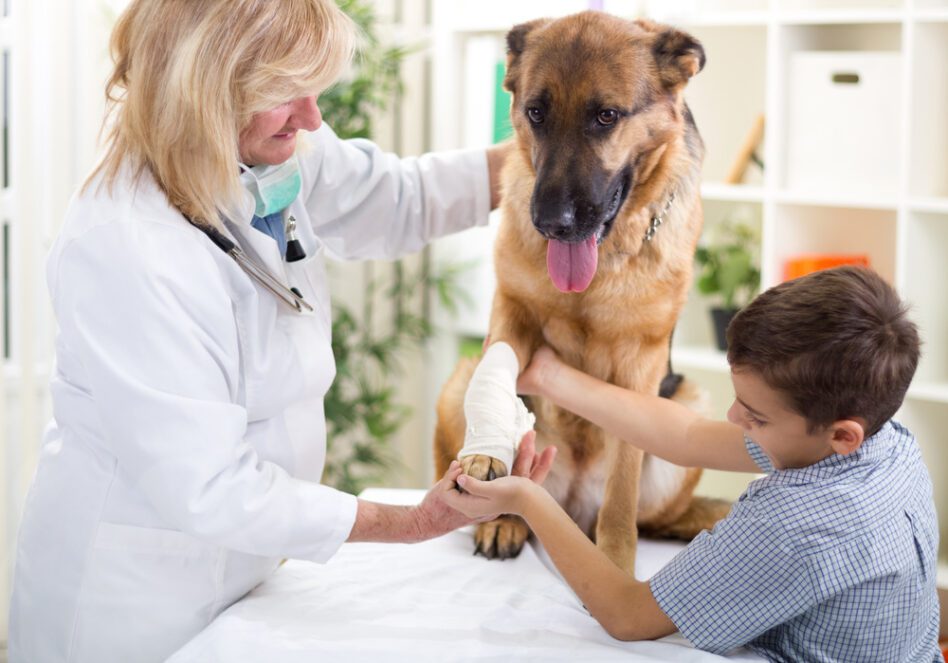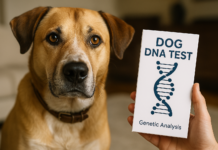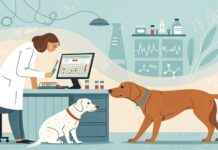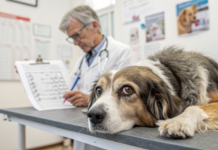Last Updated on October 18, 2022 by Dogs Vets
How To Care For A Dog With A Limb Injury
When your dog is being playful, you may find them with their legs in the air, their knees pointing forward, or even standing on their tippy toes. However, their strength and flexibility can only go so far, and they may end up hurting themselves.
An injury could occur if your dog puts too much strain on its limbs. Once your dog is injured, you need to help and comfort them. Hence, it would help to give your dog first aid to prevent further injury.
Be careful not to make things worse. Take your dog to a vet to determine how severe the limb injury is before you get over-the-counter medications. You can ask the vet how to properly care for your dog during and after the injury.
The following are some ways you can care for your dog when they have a limb injury.
1. Do First Aid
If your dog has an injured limb, you’ll first notice a change in how they walk. Once you see this, you must examine the body to determine where it’s hurt. But be careful, you don’t want to hurt them further, or they might attack you. Remember, an injury riles up even a calm dog, and they can harm you.
Speak calmly to the dog and check the injured limb. You may have to clip some of its furs away to get a clear look at the injury.
If it’s a cut, apply some petroleum jelly to keep the hair clippings out. The injured area may be bleeding, and you need to stop this.

Use a washcloth to press down on the injured area gently. If the blood soaks through, don’t remove it. Instead, add more layers on top.
The dog could’ve been trapped by a fence or under a table. You need to move your dog carefully to avoid further injuries. If you can’t, then it’s time to call for rescue.
2. Go To A Veterinary Doctor
Both severe or mild limb injuries need to be checked out by a vet. The injury can be caused by a broken or twisted bone. Either way, it’s best to have it checked and examined.
On the other hand, if you wait for the limb to heal without seeing a vet, it could get infected, and you risk your dog getting paralyzed.
You need to call for immediate help if the limb injury causes the following symptoms:
- Difficulty breathing
- Continuous bleeding
- Difficulty standing
- Your dog becomes unconscious
- Paralysis
After the hospital visit, your dog will probably have a cast and splint to manage the fracture. Although it’s an excellent surgery alternative, it would help to closely watch the healing process to maintain the cast and splint.
Meanwhile, it’s best to check your dog daily and ensure the injured area is completely dry. As much as possible, the dog shouldn’t move around to avoid cast sores.
You can also enlist the help of Sunnyside Veterinary Clinic or similar service providers to assist you with cast and splint care to ensure your dog heals well and fast.
3. Have Physical Therapy Sessions
To strengthen the injured limb, your dog needs physical therapy. This includes your dog using a land treadmill, swimming, or balancing on a board.
If your dog can’t walk on their own, go swimming. Floating will help them cope with their injury and reduce inflammation and pain. Physical therapy can improve your dog’s flexibility, overall function, endurance, and strength.
If you want it done professionally, find a certified canine rehabilitator who can help you. They’ll review the state of your dog’s injury and devise a personalized treatment plan. They can also teach you exercises at home that you can do with your dog in between appointments.
With physical therapy, you can immediately see changes and improvements in your dog’s limb. However, you must be patient. Every dog is different; you shouldn’t worry if yours takes longer to heal.
4. Put Your Dog On A Diet
It’s essential to provide your dog with an immune-boosting diet while recovering. Food medicine and food therapy can also apply to dogs.
You can optimize your dog’s immune system by giving them a diet of meat enriched with nutrients.
Some foods you can add to your dog’s diet include omega-3 oils like sardines and oily fish, milk, raw meat, and bone broth. Meanwhile, did you know that eggs can provide the calcium needed for bone strengthening?
In addition, fermented foods like kombucha, yogurt, and fish sauce provide probiotics for your dog. Moreover, medicinal mushrooms with vitamins, antioxidants, flavonoids, and beta-glucans can help speed up their recovery.
Food is the essential medicine your dog needs to recover.
On the other hand, the injured limb may make it hard for your dog to eat. It would help to buy a bowl with low sides to make feeding easy. If they completely lose their appetite, contact your vet for instructions on what you should do.
4. Have Tick And Flea Medications
The hygiene of your dog has an impact on its recovery. Ticks and fleas cause infections and more on the wounded limb. Also, the need to scratch makes the dog uncomfortable, and as they scratch, they could strain the injured limb more.
Hence, you must always have your dog on tick and flea medications to prevent this.
On the other hand, parasites could get into your dog’s bloodstream and cause problems like anemia and allergic reactions. Invest in flea solutions such as a comb, shampoo, and flea pills.
5. Be Careful During Transportation
Taking your injured dog to appointments can be challenging because you risk causing more injury and worsening the pain they’re experiencing.
For smaller dogs, you can easily carry them while supporting the injured limb. However, if you have a large dog, you must help them walk to the car.
Get someone to help you carry them on a blanket. Don’t lay them on their injured side.
As you transport your dog, remember that the pain may be too much, and they could snap and hurt you. So, before you carry them, use restraints such as putting a temporary muzzle over the nose. Don’t forget to talk to them to make them feel comfortable and calm.
6. Let The Dog Rest
A limb injury can drain your dog’s energy, and you must let them rest as they recover. Limit your walks which could strain the injured limb.
To keep your dog from hurting themselves, you may consider keeping them in a crate or placing them in a room with minimal clutter. Choose bedding that evenly spreads under your dogs’ weight so they can rest peacefully.
7. Use A Dog Leash For Walks
Due to the limb injury, your dog is in a fragile state. Hence, it’s best to minimize their walks and interaction with other pets. A dog harness can help you control your pet during your walks. With it, you can stop the dog from running off.
Meanwhile, other dogs could have fleas, ticks, and other bacteria. During the healing process, you must keep your pet away from other dogs to ensure they don’t contract parasites or diseases.
8. Avoid Infections
If the limb injury is corrected through surgery, your dog might lick it so much that it reopens. It can get aggressive and remove the sutures on the incision site.
With the pain and discomfort of the wound, your dog would want to lick it to soothe the pain. Although licking the wound helps with the drying and itchiness, it introduces bacteria that results in an infection.
If the limb injury develops a wound, you should ensure your dog doesn’t lick it.
The infections can potentially damage the wounded area and the surrounding tissues and cause more irritation. Also, it delays the healing process since you now have to treat the infection. Preventing the dog from licking its wounds ensures the limb heals fast with no infections.
You can do the following to keep your dog from licking its wounds:
- Get a soft cone that extends at least two inches beyond the muzzle of your dog.
- Use an inflatable pet collar.
- Use wound dressing to cover the wound.
- Use dog socks or booties.
- Buy your dog the recovery suits.
9. Never Miss Out On Check-Ups
Being a pet parent, you must take your dog to all their checkups set by the vet. Checkups are needed to keep track of how your dog is healing.
Ensure you take your dog for regular checkups to refill the medications and have the wounds redressed and the splint adjusted. You can also ask the vet your concerns about any underlying symptoms you may have noticed.
Conclusion
Playful and bubbly dogs give you joy. However, this nature also puts them at risk of hurting themselves, especially their limbs. Even after you’ve taken them for treatment and care, you still have to watch over them as they recover.
The tips above teach you the proper ways to care for your dog when they have an injured limb. Although it’s not extensive, it covers your bases. Remember, your dog will need more attention, so be sure to give it for faster recovery.
Facts Check
We hope you enjoyed this article… What are your thoughts?
Please feel free to share this article!

















